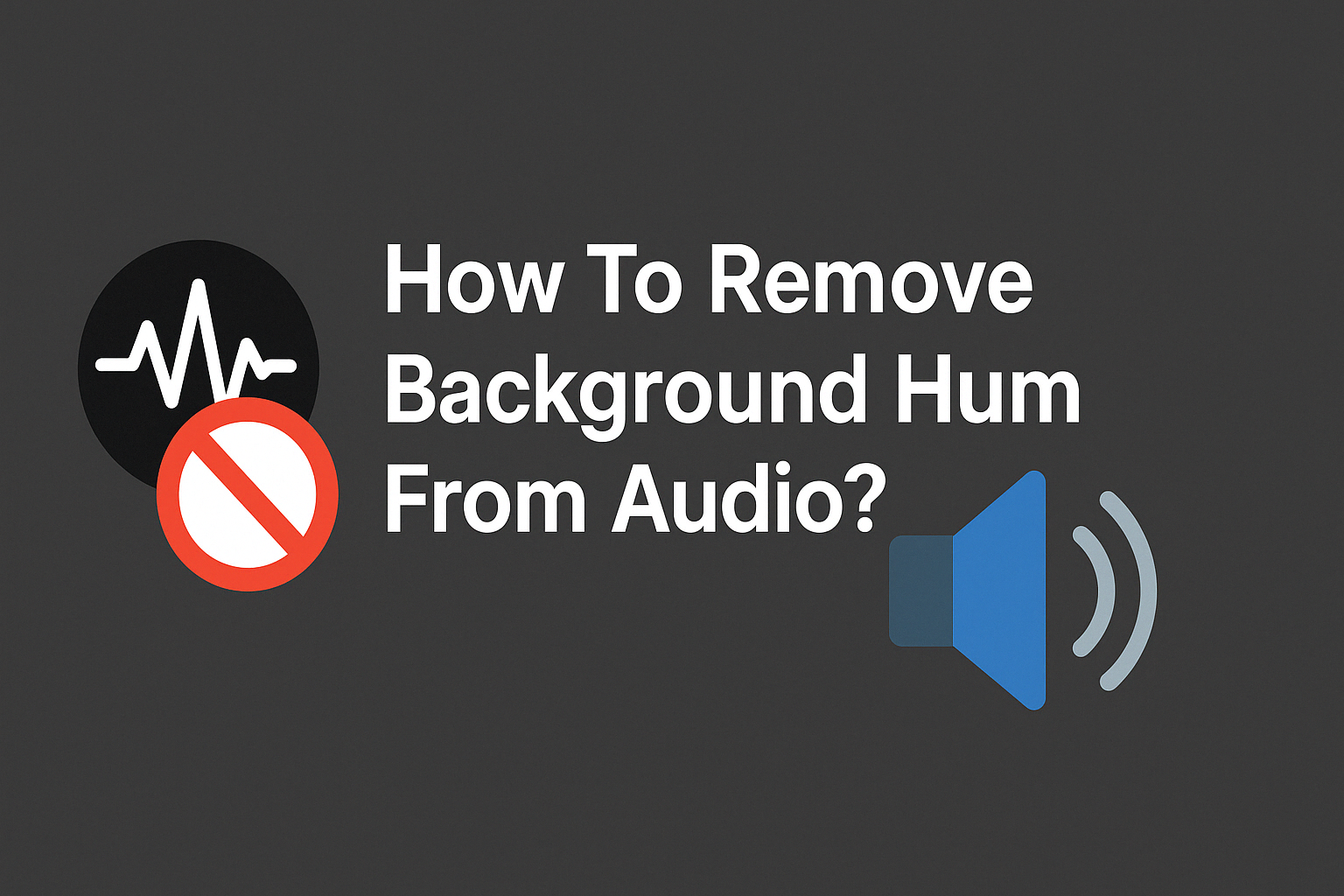Background hum in audio can distract listeners and reduce the overall quality of your recording. Removing that low, constant noise can make your audio sound clean and professional, whether you’re working on a podcast, video, or voice-over.
In this blog, I’ll walk you through simple and effective ways to remove background hum from your audio using free and paid tools. You don’t need to be an audio expert; just follow along, and your sound will be crisp and clear in no time.
Understanding Background Hum
Background hum is a low, steady noise that often sneaks into audio recordings. It usually comes from electrical interference, such as from power cables, faulty equipment, or nearby electronics. This hum is most noticeable when there’s silence in the recording.
Many times, it’s caused by 50Hz or 60Hz electrical signals, depending on your country’s power supply. People working with microphones, sound systems, or recording gear may experience it, especially in indoor setups.
The hum can blend into the audio and affect clarity. It might sound like a soft buzz or drone in the background. Understanding where it comes from helps you know how to spot it early during recording.
Why Remove Background Hum From Audio?

Removing background hum from audio makes your sound clean, clear, and pleasant to hear. That low, constant noise often comes from electrical interference or poor recording setups. If it stays in the audio, it can distract listeners and lower the overall quality.
When the hum is gone, your voice or music sounds more professional and easier to focus on. It also helps people hear every detail better, especially in podcasts, interviews, or videos. Studies show that clear audio increases listener retention and trust.
So, if you’re making content or sharing recordings, removing hum makes your message stronger and the experience more enjoyable. People will stay longer and understand you better.
Methods For Removing Background Hum
The most effective methods for removing background hum include using noise reduction plugins, equalization, and proper grounding techniques.
Here are the best methods:
- Use Noise Reduction Software
Tools like Audacity (Noise Reduction), Adobe Audition (DeNoise), or iZotope RX (Voice De-noise) can identify and reduce hum frequencies. - Apply Equalization (EQ)
Use a parametric equalizer to cut the specific frequency of the hum (usually 50Hz or 60Hz, depending on power source) and its harmonics. - Check and Fix Grounding Issues
Eliminate ground loops by using ground loop isolators or ensuring all devices are plugged into a single power outlet. - Use Balanced Audio Cables
Switch to XLR or TRS cables instead of unbalanced ones (like RCA or TS) to reduce interference. - Isolate Electrical Interference
Keep audio cables away from power cables, routers, or electrical appliances that may emit EM interference. - Use a Hum Eliminator
Hardware like Ebtech Hum X or Behringer HD400 can physically remove hum in professional audio setups.
Frequently Asked Questions (FAQs)
What Causes Background Hum In Audio Recordings?
Background hum in audio recordings is usually caused by electrical interference, poor grounding, or nearby electronic devices. It often sounds like a low, steady buzz and can come from cables, power sources, or even old microphones.
Can Background Hum Be Completely Eliminated?
Background hum can be greatly reduced using noise reduction tools, but complete removal isn’t always possible. Most software can remove up to 90% of background hum without affecting voice quality, making audio much clearer and pleasant to hear.
How Can I Prevent Background Hum In Future Recordings?
To prevent background hum in future recordings, use a shielded microphone, record in a quiet room, and keep cables away from power sources. Most hums come from electrical interference or low-quality gear. Clean power helps, too.
Are There Specific Software Tools That Are More Effective in Removing Background Hum From Audio?
Yes, there are specific tools that work well to remove background hum from audio. Popular ones like Adobe Audition, Audacity, and iZotope RX use advanced noise reduction features to clean audio without affecting voice quality.
Conclusion
Removing background hum from audio is crucial to keep your sound clean, clear, and professional. Whether you’re a content creator, podcaster, or editor, eliminating that unwanted noise can greatly improve how your audience experiences your work.
From using noise reduction tools to identifying the right frequencies, small changes lead to big results. Clean audio isn’t just technical, it’s the foundation of trust and quality.
